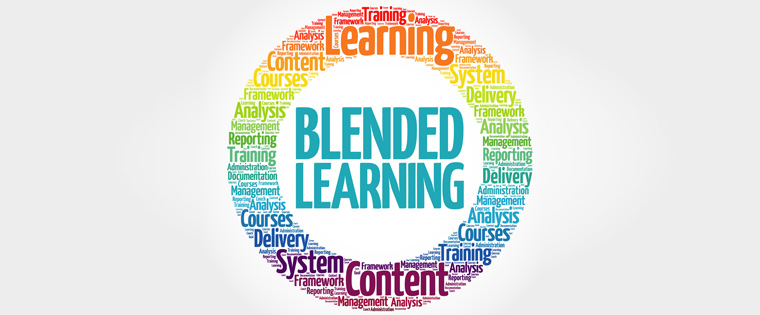Revolutionizing Product Training: How Blended Learning Delivers Results

Product training holds significant importance across industries, ensuring that employees and stakeholders have the necessary knowledge and skills to understand, promote, and use products effectively. It's not just about understanding product features; it's about grasping the product's value, applications, and how it meets customer needs. Blended learning has emerged as a transformative approach to product training, harnessing the strengths of both traditional and digital methods to enhance learning outcomes. In this blog, we'll delve into how blended learning can revolutionize product training across various industries.
Blended Learning is Definitely a Game-Changer for Product Training!
Here are a few benefits to support the case -
- Improved engagement and retention
- Flexibility for diverse learning styles
- Cost-efficiency
- Real-world application
Benefits of Blended Learning for Product Training
1. Improved Engagement and Retention
Blended learning excels in keeping learners engaged and boosting information retention. It caters to diverse learning styles by offering a range of resources such as videos, interactive modules, and face-to-face interactions. For example, imagine a scenario in a tech company where the sales team is being trained on a new software product. By blending hands-on workshops with online tutorials and knowledge checks, sales reps can better understand the product's intricacies, leading to improved sales effectiveness.

2. Flexibility for Diverse Learning Styles
Different industries often have unique learning requirements. In manufacturing, employees may need a mix of hands-on training and theoretical knowledge. Blended learning offers the flexibility to provide practical, on-the-job training alongside online modules that explain the underlying principles. This approach ensures that all employees, regardless of their learning style, can acquire the necessary knowledge and skills.
3. Cost-Efficiency
Cost-effective training solutions are highly sought after in today's competitive landscape. Blended learning can be a cost-efficient choice, as it reduces the need for extensive travel, printed materials, and dedicated physical training spaces. For instance, in the pharmaceutical industry, where compliance training is crucial, a blend of online modules, webinars, and occasional in-person sessions can significantly reduce expenses while maintaining training quality.
→ Download Checklist Now: Is Blended Learning The Right Choice for You?
4. Real-world Application
Blended learning isn't purely theoretical; it's designed for real-world application. It allows learners to gain practical skills and knowledge that can be directly applied to their work. Consider a scenario in retail and customer service where employees are trained using a blend of interactive online modules and role-playing exercises. This approach prepares them to handle real customer interactions effectively, leading to improved customer satisfaction and sales.
Designing Effective Blended Learning Courses for Product Training
1. Identifying Learning Objectives
Before diving into the design phase, it's crucial to clearly define the learning objectives for the product training program. These objectives should be specific, measurable, and aligned with the desired outcomes. For instance, in the case of software product training, objectives might include mastering key features, understanding customer use cases, and demonstrating troubleshooting skills.
2. Content Development
Effective content development is the cornerstone of any successful blended learning course. This involves creating engaging, informative, and up-to-date materials. One of the common challenges here is keeping content updated. As products evolve, so must the training materials. Regular reviews and updates are essential to ensure that learners are working with the most current information. Here are a few eLearning authoring tools to develop online learning content.

3. Combining Online and Offline Components
Blended learning's strength lies in its ability to integrate both online and offline components seamlessly. This requires careful planning to determine when each mode is most effective. For example, complex concepts may be better suited for in-person sessions, while digital resources like videos and quizzes can reinforce learning in an online environment.
4. Technology and Infrastructure
The successful implementation of blended learning relies heavily on technology and infrastructure. Challenges may arise in ensuring that all learners have access to the necessary tools and resources. It's important to address issues of accessibility, such as providing alternative formats for learners with disabilities or limited internet connectivity.
5. Assessment and Feedback
Regular assessment and feedback mechanisms are essential to gauge learners' progress and adjust the course accordingly. Implementing robust feedback mechanisms is crucial for continuous improvement. Surveys, quizzes, and analytics can help instructors and course designers assess the effectiveness of the training program. Learner feedback should be actively sought and considered for making necessary adjustments. Best practices include providing constructive feedback and creating a supportive learning environment.
Challenges Faced in Implementing Blended Learning for Product Training
1. Resistance to Change
One of the primary challenges in implementing blended learning is resistance to change. Some learners and instructors may be accustomed to traditional teaching methods and may initially resist the shift to a blended approach. Overcoming this resistance requires effective communication and demonstrating the benefits of blended learning, such as improved outcomes and flexibility.
2. Technology Integration
Integrating technology seamlessly into the learning process can be a hurdle. Not all learners may be tech-savvy, and ensuring a user-friendly experience is crucial. Solutions might involve providing training on the use of digital tools, simplifying interfaces, or offering technical support when needed. In short, digital literacy is way more important in today’s completely digital work environment.
3. Maintaining Consistency
Maintaining consistency in content delivery across various modes of learning can be challenging. To address this, it's advisable to develop standardized templates and guidelines for content creation. This ensures that the quality and message remain consistent throughout the training program.
4. Tracking Progress
Tracking learner progress and performance can be complex, especially in large-scale blended learning programs. Learning Management Systems (LMS) can be valuable tools for tracking and managing learners' progress, providing insights into areas that need improvement, and facilitating communication between instructors and learners.
Best Practices to Design Blended Learning for Product Training
1. Interactive Content
Interactive content is a cornerstone of effective blended learning. Incorporating elements like gamification can make learning more engaging. Gamification, such as quizzes, simulations, or virtual challenges, can motivate learners to actively participate and retain information better. For instance, in a product training scenario, a gamified quiz could reward learners for correctly identifying product features and their applications.
2. Instructor Involvement
Instructors play a pivotal role in blended learning. They need to be actively engaged, providing guidance, facilitating discussions, and offering timely feedback. In the case of product training, instructors can share real-world examples and insights, making the training more relevant. Regular communication between learners and instructors fosters a sense of community and support.
3. Learner-Centric Approach
Tailoring the learning experience to individual learners' needs is a key best practice. This involves providing personalized learning paths or options for learners to choose their learning resources based on their preferences and skill levels. In a product training context, this might mean allowing sales representatives to focus on modules that address their specific customer segment or industry.
4. Continuous Improvement
Blended learning is not a one-time effort; it's an ongoing process. Regularly updating content, incorporating new technologies, and adjusting the curriculum based on learner feedback are vital for keeping the training program effective. Continuous improvement ensures that the training remains aligned with industry trends and evolving product features.
Parting Thoughts!
In conclusion, blended learning presents a powerful solution for product training across a wide range of industries. It engages learners, accommodates diverse learning styles, and is cost-effective. By providing real-world applications, it ensures that learners gain practical skills that directly benefit their roles. If you are still in a dilemma whether you need blended learning for your organization or its fine the other way, here’s an effective checklist to help you out!





